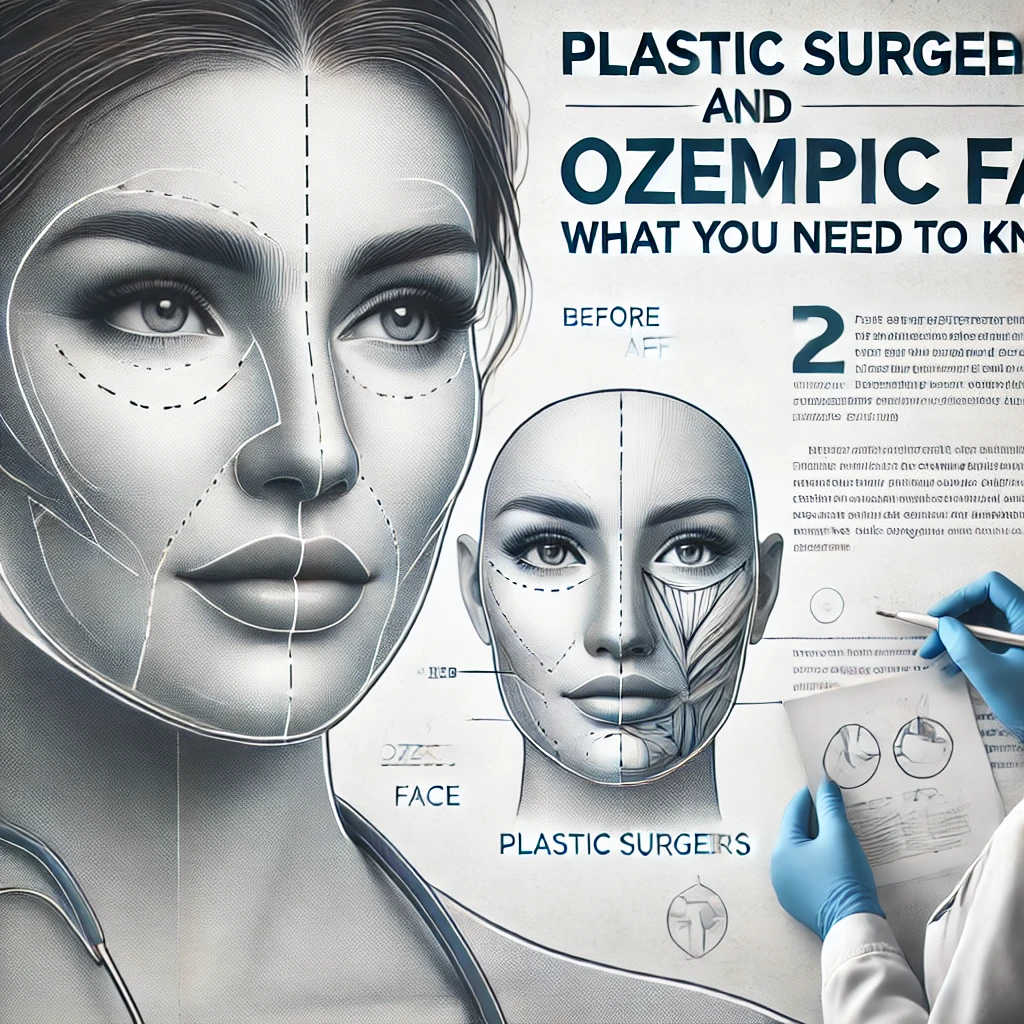In recent times, a new term has surfaced in the world of cosmetic procedures—Ozempic Face. As the weight-loss medication Ozempic grows in popularity, people are noticing changes in their facial appearance after significant weight loss. Many are turning to plastic surgeons to address these concerns. But what exactly is “Ozempic Face,” and why are plastic surgeons getting involved?
In this post, we’ll dive into what Ozempic Face is, why it happens, and how plastic surgeons are helping people restore their youthful looks. Whether you’re curious about the effects of Ozempic or considering a cosmetic procedure, we’ve got all the information you need.
What Is Ozempic Face?
Ozempic is a medication primarily prescribed for managing Type 2 diabetes. However, it has recently gained attention for its weight-loss effects. As more people use Ozempic to shed extra pounds, some have noticed an unexpected side effect: a loss of facial fat, resulting in a gaunt or aged appearance. This phenomenon is commonly referred to as Ozempic Face.
Why Does Ozempic Face Happen?
When you lose weight—whether through dieting, medication, or other means—your body doesn’t just shed fat from your stomach, arms, and legs. It also reduces fat in your face. While losing weight can improve your overall health, a significant reduction in facial fat can lead to hollow cheeks, sagging skin, and a generally aged look.
For many, this facial transformation feels drastic and unwelcome, prompting them to seek the expertise of plastic surgeons.
How Plastic Surgeons Address Ozempic Face
Plastic surgeons are becoming increasingly involved in treating Ozempic Face. They use a variety of techniques to restore volume and youthful contours to the face. Some of the most common procedures include:
1. Dermal Fillers
One of the quickest and least invasive solutions for Ozempic Face is dermal fillers. These injectables, such as hyaluronic acid, add volume to the face, filling in hollow areas like the cheeks and under the eyes.
- Benefits: Non-surgical, immediate results, minimal downtime.
- Drawbacks: Temporary (lasting about 6 to 12 months), may require regular touch-ups.
2. Fat Transfer
For a more permanent solution, some patients opt for a fat transfer. This involves removing fat from another part of your body (like the thighs or abdomen) and injecting it into your face. It’s a natural way to restore lost volume, and the results are long-lasting.
- Benefits: Uses your body’s fat, longer-lasting results compared to fillers.
- Drawbacks: Surgical procedure, requires more recovery time.
3. Facelift
In cases where weight loss has caused significant sagging of the skin, a facelift may be the best option. A facelift tightens the skin and underlying muscles, creating a smoother and more youthful appearance. While it’s a more invasive procedure, the results are dramatic and long-lasting.
- Benefits: Long-term results, addresses both sagging and volume loss.
- Drawbacks: Surgical, involves downtime and higher cost.
4. Skin Tightening Treatments
Non-surgical skin tightening procedures, like Ultherapy or radiofrequency treatments, can also help to firm up sagging skin. These treatments stimulate collagen production, improving skin elasticity over time.
- Benefits: Non-invasive, gradual improvement, no downtime.
- Drawbacks: Multiple sessions may be needed for noticeable results.
Is It Necessary to See a Plastic Surgeon for Ozempic Face?
Not everyone who experiences weight loss will develop noticeable Ozempic Face. For some, the change is subtle and not bothersome. However, if you’re unhappy with the way your face looks after losing weight, a consultation with a plastic surgeon can help you explore your options.
Many plastic surgeons specialize in facial contouring and volume restoration, making them well-equipped to address the concerns associated with Ozempic Face.
How to Prevent Ozempic Face
While you can’t completely avoid facial fat loss when you’re shedding pounds, there are some things you can do to maintain a healthy, youthful appearance:
1. Stay Hydrated
Keeping your skin hydrated is essential. Drink plenty of water and use a good moisturizer to help maintain skin elasticity and plumpness.
2. Collagen Supplements
Some people swear by collagen supplements to keep their skin firm. While the evidence is still mixed, many find that it helps maintain a youthful glow.
3. Eat a Balanced Diet
Losing weight too quickly can make the effects on your face more pronounced. Aim for a balanced diet rich in vitamins and minerals to keep your skin healthy as you lose weight.
4. Regular Skincare Routine
Establishing a skincare routine that includes sunscreen, retinoids, and antioxidants can help protect your skin and improve its appearance, even as you lose weight.
Conclusion
Ozempic Face is a side effect that some people experience after significant weight loss, particularly with medications like Ozempic. While this may be an unwelcome change for some, the good news is that plastic surgeons offer a variety of treatments to restore volume and smooth out sagging skin. From dermal fillers to more permanent solutions like fat transfers and facelifts, there are many ways to combat the signs of facial aging.
If you’re concerned about your facial appearance after weight loss, consult with a plastic surgeon to find out which treatment option is right for you. With the right approach, you can achieve a more youthful and refreshed look.
FAQs
Q1: What exactly is Ozempic Face?
Ozempic Face refers to the loss of facial fat that can occur after significant weight loss, often due to the use of the weight-loss medication Ozempic. This can result in a hollow, aged appearance.
Q2: How do plastic surgeons treat Ozempic Face?
Plastic surgeons treat Ozempic Face using various methods, including dermal fillers, fat transfers, facelifts, and skin-tightening treatments. The right choice depends on your specific needs and desired results.
Q3: Are the treatments for Ozempic Face permanent?
Some treatments, like fat transfers and facelifts, provide long-lasting results, while others, like dermal fillers, are temporary and need regular maintenance.
Q4: Can I prevent Ozempic Face while losing weight?
While you can’t entirely prevent facial fat loss, maintaining hydration, eating a balanced diet, and taking care of your skin can help minimize its effects.
Q5: How long does it take to recover from these procedures?
Recovery time depends on the procedure. Dermal fillers have minimal downtime, while fat transfers and facelifts require a longer recovery period, ranging from a few days to a few weeks.
By understanding your options and consulting with a skilled plastic surgeon, you can confidently tackle the challenges of Ozempic Face and enjoy the benefits of your weight loss journey while maintaining a youthful appearance!








